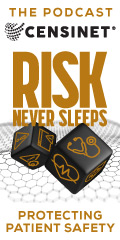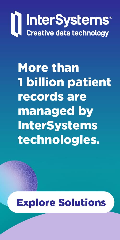EPtalk by Dr. Jayne 9/22/22

Plenty of people have returned to a level of comfort with business travel and it seems like they’re flocking to conferences. Redox is promoting their Connect Customer Conference to be held in Philadelphia on October 18. The one-day conference is priced at $99, although current customers can get a discount code through their account manager. The fee includes breakfast, lunch, snacks, and admission to a reception at the Philadelphia Museum of Art. The conference itself will be held at the Philadelphia Masonic Temple, so props to Redox for scheduling what might be the most architecturally interesting conference of the year.
I had to renew my Drug Enforcement Administration registration this week, and the $888 fee always hurts. Most mainstream telehealth-only physicians aren’t allowed to prescribe controlled substances, but we’re required to maintain a DEA registration to serve as a proxy for proof that we haven’t done anything shady. The DEA, similar to multiple state-level controlled substance agencies, has yet to come to terms with the reality of telehealth. They still want you to list a physical address at which patient care occurs, which some of us don’t have. I hate having to use my home address, but it’s the only way to register. Let’s hope that agencies will evolve to recognize that some of us may never see patients in person again.
I appreciated the “Renewal Application Quality Assurance Survey” that appeared after finishing my registration. The questions included some commentary that falls into the “things we wish we could say” category. For example, the first question asked for feedback on the overall experience, noting “Please be aware that some common complaints describe aspects of the application that are operating as intended” including the fact that failed logins don’t explain why (so fraudsters can’t exploit that data point) and that the burden of information needed for login is intentional. In addition to rating the login experience, users are asked to rate the usefulness of help/error messages and overall application ease of use.
My readers know that I’m a sucker for a compelling headline, and the hint of research that would explain “Why Hard Thinking Makes You Tired” certainly grabbed me. The theory is that intense mental activity causes a buildup of substances in the brain. Specifically, the chemical glutamate builds up in the brain’s decision center, leading to alterations with thought processes and the progression of mental fatigue. The authors used magnetic resonance spectroscopy to evaluate changes in the brain during the workday. Glutamate is processed during sleep, so the bottom line is that it’s probably a good idea to avoid critical decisions while tired.
I’m a big fan of patient portals and giving patients the ability to schedule their own appointments, testing, and diagnostics if it’s something they want to do. Of course, not every patient is going to be able to do that, or wants to do that, but for those that do, it can take the load off of office staff and call centers. A recent article looked at whether self-scheduling of diagnostic imaging studies had an impact on health disparities. The authors looked at outcomes of a process using the patient portal at the University of California San Francisco and a subset of diagnostic imaging studies that were flagged as eligible for self-scheduling. The portal-based scheduling process was only available in English and allowed for scheduling of a subset of MRI and ultrasound tests as well as CTs, bone density scans, and mammograms as long as a provider had placed an order accompanied by a “ticket” that would help the patient schedule the correct test type, location, and date. The time period analyzed was January 1 to September 1, 2021.
The authors found that subsets of active patient portal users were less likely to take advantage of self-scheduling, including Latinx, black / African American, and non-English speaking patients. Additionally, those with Medicaid or Medicare coverage were less likely to schedule online versus those with commercial insurance coverage. There’s always a chance that patients won’t self-schedule, and backup processes need to be in place to ensure that no one falls through the cracks. Still, more than 18,000 tests were self-scheduled during an eight-month time period, which is nothing to sneeze at. The authors did note a couple of study limitations, including inability to determine whether the patient actually scheduled the test on their own or whether they had assistance from a family member or caregiver.
Looking at the design of this study, the patient stratification piece was likely fairly straightforward because organizations have been required to collect this specific demographic data for quite a while. As researchers look to further understand patient behavior, it will be more important to understand other data covering social determinants of health. Another article that came out this week looked specifically at clinician awareness of their EHR’s ability to capture that kind of information. The authors looked at data from the National Electronic Health Records Survey and analyzed it based on physician, practice, and EHR characteristics. They found that physicians who practice in community health centers were more likely to document these factors than those practicing in other locations. Similarly, physicians involved in payment models that included social care initiatives were more likely to document. Regardless of practice site, physicians who were more aware of advanced EHR capabilities, such as patient engagement or population management features, were more likely to document social factors.
The authors recommend that organizations develop strategies to increase provider awareness of documentation capabilities, especially in practice settings where they are less likely to be aware. I was surprised that payer-owned clinics were found to have lower awareness of documentation capabilities for social determinants, so there’s certainly room for improvement in that environment. The authors also call for policy efforts to expand the use of clinical quality measure that look at social risk screening.
I agree that promoting lesser-used features of the EHR should be part of ongoing optimization efforts, whether they are related to social determinants, provider efficiency, or something else. Unfortunately, many organizations have cut budgets for optimization efforts and ongoing EHR training.
What is your organization doing to improve documentation standards and to get the most return on its EHR investment? Leave a comment or email me.

Email Dr. Jayne.



















































































The primary point of using the Cloud is using operating expenses vs limited capital ones and avoiding having to update…